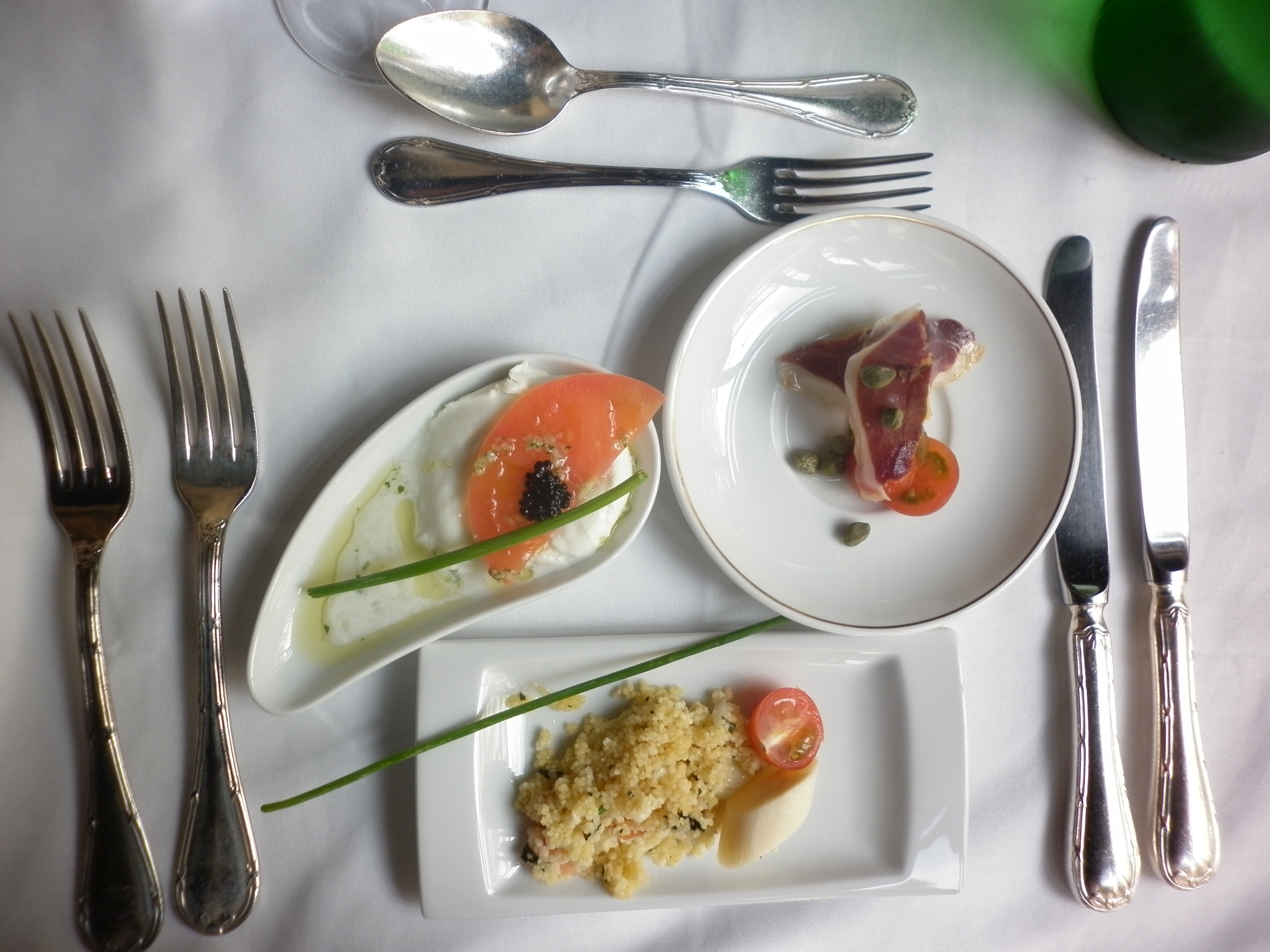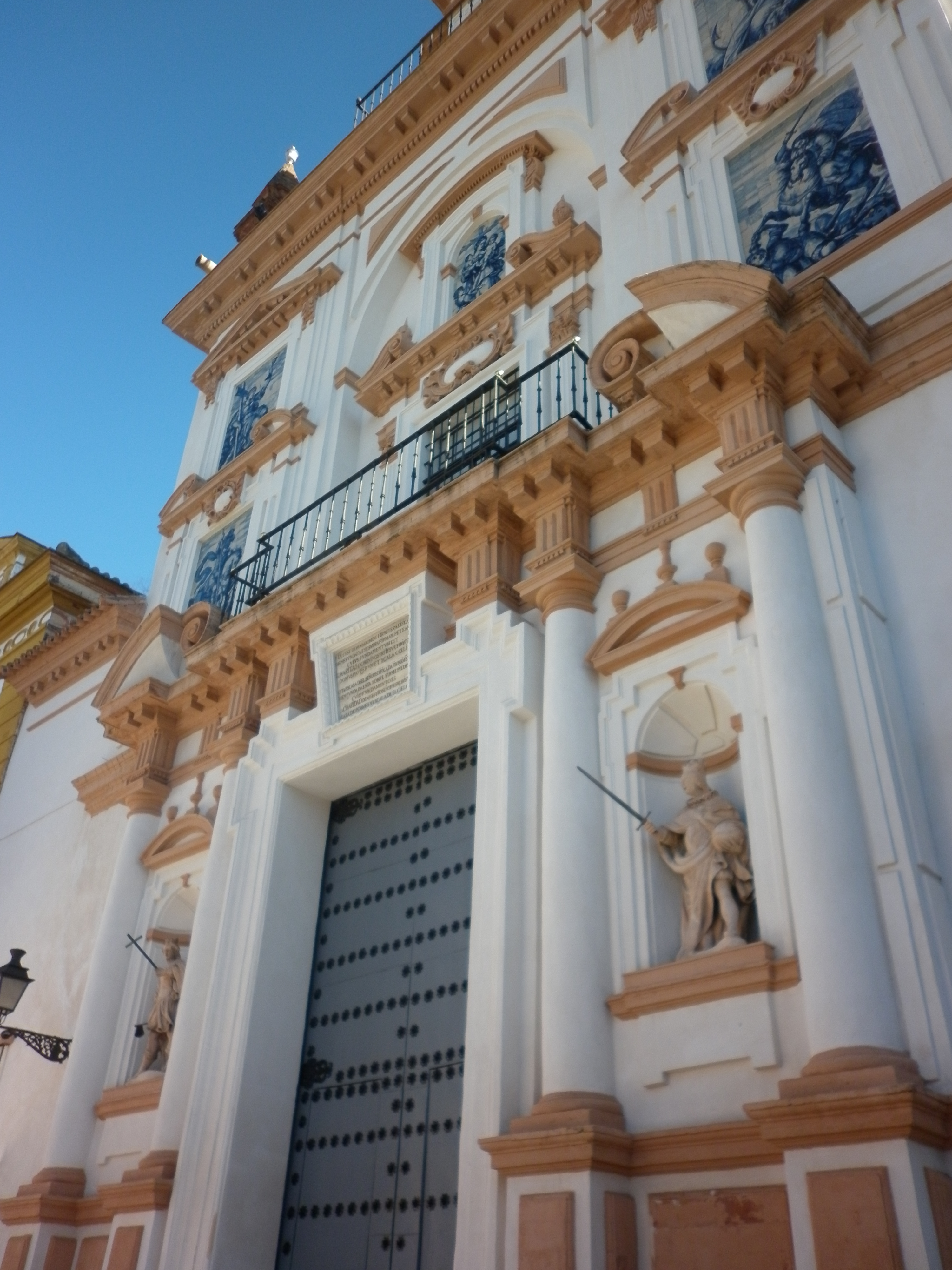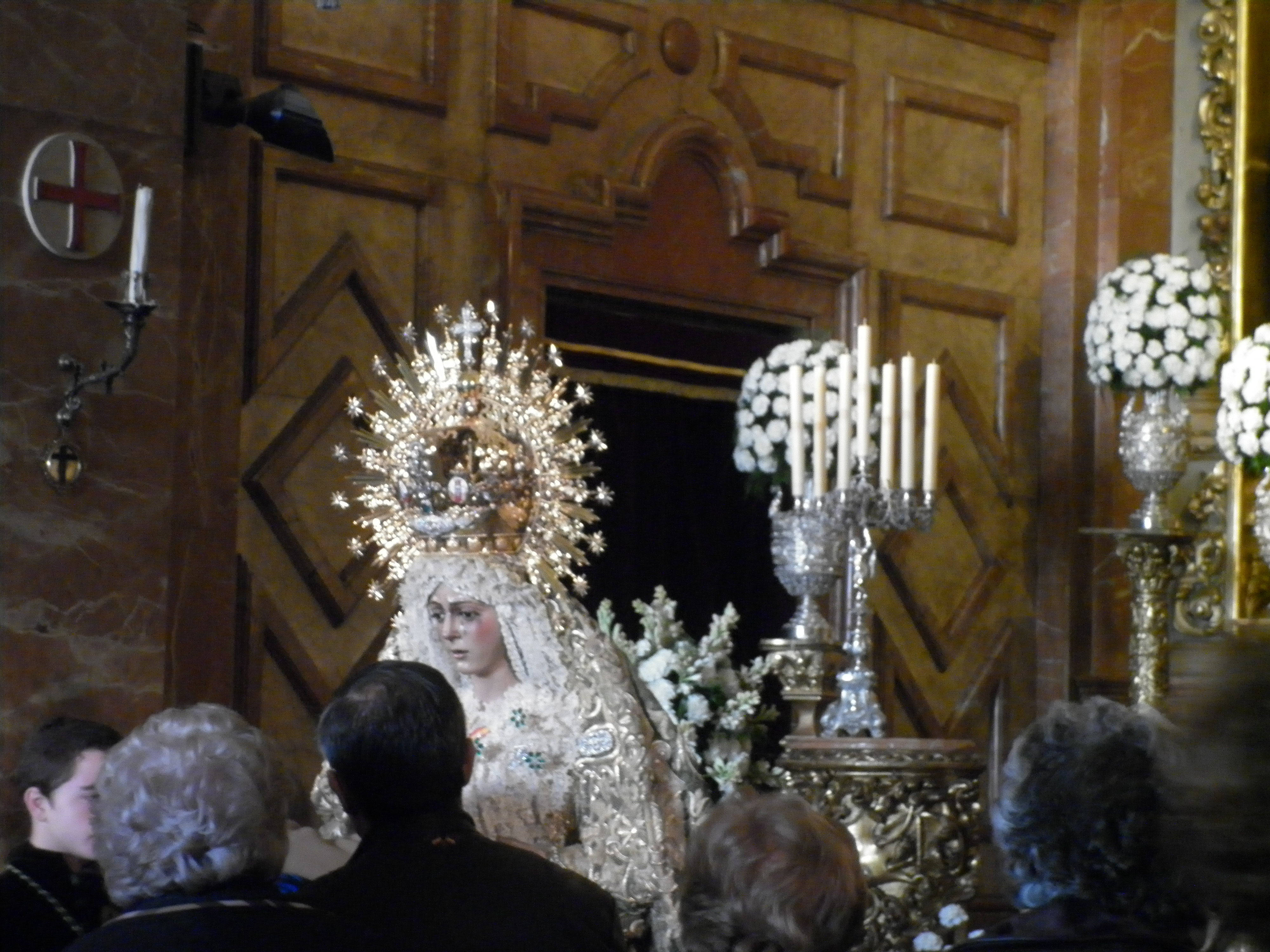On this weekend, one year ago, my friend Canilaydee and I were enjoying a rare Friday off of work. It was Día del Profesorado, which is pretty much a mental health day for teachers in Andalucía that also coincides with Andalusia Day. We came on the same plane over from Spain, so our days in Seville are in the same ballpark. Thus, over caramel macchiatos at Starbucks (the shame!), we decided to make a bucketlist.
One year later, I’m still trying to cross several things off the list. There’s a few I’ve had the chance to do, and other that will have to wait until all of this business of jobs, grad school and freelancing gets a bit more settled. In the past year I’ve:
- Eat breakfast at the sumptuous Hotel Alfonso XIII (closed for renovations till March 2012)
My friend Lauren of Spanish Sabores and Recetas Americanas got married to her boyfriend Alejandro last June, so we wanted to do something special for her. The first weekend of May we had Monday off, so Kelly, Claudia and I booked her a table at brunch at Seville’s breathtaking Hotel Alfonso XIII. Acting as a bit of a shower, a bit of Sunday morning mayhem, we guzzled champagne and bite-sized breakfast tapas. Sadly, the weather didn’t cooperate and we couldn’t use the pool, but it was a great deal for endless food and drinks in one of Seville’s most beautiful buildings.
If you go: The hotel is closed until next month for renovations, and rooms are quite costly. As an alternative, you could have a coffee in the outdoor patio, a drink in the martini garden (where Cameron Diaz was spotted while filming Knight and Day) , or indulge in the Sunday brunch in the San Fernando restaurant. Prices weren’t available for the new temporada, but it cost us each about 39€, and they allowed us to bring our own cake.
- Explore Hospital de la Caridad, noted for its collection of sevillano painters like Murillo and Velázquez
On a lazy Saturday morning just before Christmas, I entered the dark halls of the Hospital de la Caridad, a temple just off the banks of the Guadalquivir. The security guard sleepily took my five euro bill and held his arm up towards the heavy wooden door. Inside sat an arcaded patio, empty except for a docent that dozed in the morning sun that creep just behind the adjacent Giralda.
While the convent isn’t much to see, the chapel houses works by the Santa Caridad’s founder, religious painter Miguel Mañanra. The space is covered in scene from Christ’s life and the floor engraved with the names of the original members of la hermandad. While a little too opulent for my taste, the chapel and museum contain works of art that rival the collection in the nearby Fine Arts Museum.
If you go: Try and go on a Sunday for free access; otherwise, the entrance to a simple museum and inner grounds will run you 5€. I personally didn’t think it was worth it. The museum is located just behind the Teatro de la Maestranza just off the river, and can be reached by buses C3, C4, C5, 40 and 41, or just a short walk from the main sights of Avenida de la Constitución. Hours are Monday – Friday 9:30 – 13:30 and 15:30 – 19:30, and Sundays and festivals from 9:00 – 12:30.
- Visit museums like Archivo de las Indias, Palacio Lebrija and Artes y Costumbres
One great thing about being a teacher is the ability to be “invited” along to places. When I go on excursions with my students, we get to visit Roman ruins, horse shows and museums for free, so my visit a few weeks ago to the Museo Encuentado in the Museo de Artes y Costumbres Populares was a real treat.
Two men dressed on period garb stood on the steps leading up to the neo-mudejar building that flanks one side of the Plaza de América, inside María Luisa Park. Using a hollowed-out gourd, they called the kids to attention before breaking us off into groups. Domingo explained the cultural heritage evident in Seville’s long history through the objects in the museum, and I was fascinated at how the museum could come to life for my young learners.
The museum has two floors dedicated to cultural heritage in Seville – artifacts, furniture, azulejos – and provides many dioramas of talleres that are especially pertinent to the area – the gold molding for semana santa floats, wine making, matanzas (if you want to know, click here), etc. I’ve yet to visit the other two, but all in good time…
If you go: The museum is located in the María Luisa Park that is walkable from the historic center, or you could alternately take buses 1, 6, 30, 31, 34, 37 or 38. The entrance cost is low – free for EU members and 1,50€ for all others, and the museum is open Tuesday from 2pm – 8:30pm, Wednesdays to saturday from 9am – 8:30pm and Sundays from 9am – 2:30pm.
- See the Virgen de la Macarena in her Basilica
In Seville, one could ask if you were sevillista or bético, referencing the two Hispalense soccer teams. In a way, you could also ask if you were more for the Virgen de la Esperanza de Triana or the Virgen de la Esperanza de la Macarena.
When I have friends come to visit and we take a walk around my old barrio of Triana, I always pop into the small chapel on Calle Pureza where my preference, la Trianera, lives, to explain the cultural significance of Holy Week. Still, after four years and four Semana Santas passed, I still hadn’t been to the Basilica de la Macarena.
That was, until December 18th. And quite by accident. And on the worst day of the year to see her. The story is just way too funny and too much of a guiri moment, so click here if you want to read it.
If you go: Macarena’s oppulent home is located in the northern end of the historic center, just off of C/ Bequer. Alternately, you could takes buses C1, C2, C3, C4, C5, 2, 13 or 14 to the entrance of the church, which is free to enter. Standard hours apply, and expect to meet a lot of faithful on feast days and during Semana Santa.
- Explore the Cementerio San Fernando, resting place of bullfighters and famous sevillanos
Just today, I crossed off another item (in addition to seeing the inside of the parliament palace). Kike lent me his car to cross town to the cemetery, where I was met with a hearse and a long funeral procession. Upon entering the brick and iron gates of San Fernando, a guard who merely pointed to a sign prohibiting cameras. I tucked Camarón back into my bag and surrendered him to the guard, pleading that he keep it in the office.
I’ve always liked cemeteries for their solace and tranquility. Seville’s massive complex is located in the northern end of the city, and the Alamillo bridge is visible over the mausoleums and walls of graves. The plot is breathtaking – walls of white hold the mortal remains of Seville’s most celebrated bullfighters – like Juan Belmonte and Paquirri – and hijos predilctos, as well as flamenco singers and businessmen, like Osborne.
I was enraptured by the bright blue sky and ability to think clearly for once. The small details left on the graves, from fascists arrows to a plastic statue of a Disney princess to plastic flags and flowers, made life’s pleasures become a reality for me. Even in death, I could imagine what a neighbor treasures in life. In the hour I spent walking through decrepid old family mausoleums and placards that had been shattered and left abandoned, I saw shrines both great and humble. Loved ones of the departed cleaned and swept the gravesites, just like in the opening scene of the Manchego women in Volver. Much more than witnessing a cultural element in flamenco or bullfighting, I was witness to the utmost respect that Andalusians use when caring for the deceased. Well worth the loss of sleep for a bit of perspective.
If you go: San Fernando cemetery is open to the public every day from 8 – 5:30am. Keep in mind that it is a sacred place for Spaniards, so loud noises and photos are strictly prohibited. You can reach the cemetery by public TUSSAM bus #10 from Ponce de León in the center. The stop is located directly across from the entrance.
Other ideas for my Seville or Spain bucketlist? This year I’m traveling to Zaragosa and Murcia, two places I’ve never visited – so only Logroño will be left to conocer! What tops your travel bucketlist for this year? Leave me ideas in the comments after viewing my original blogpost here.









Does the Sunday morning pet market by La Pasarela still exist? David and I have tried to go over there a couple of times but it wasn’t there…. want to pet puppies!!!
I don’t think so. Did David tell you I ran into him? Not as cool as it would have been to run into you too!
Brunch at Alfonso was so yummy! Good for you for crossing off so much from your list! One day I’m going to really reflect on life and write my own…
I’m a big fan of cemeteries too!
So nice to know I’m not alone!
Good for you!
I think this is a great idea, and if certain things pan out, I’m totally doing this. (Sorry to be so mysterious.)
Mario is going to be working in Seville?! Or just in Spain in general? Mine is basic for Spain: Fallas, Camino, Murcia, Zaragosa, La Rioja, more camping, Costa Dorada, Andorra! And maybe learn to make cheese. Matazna I can skip.
Never been to Zaragoza either! I’d put the islas cies on your list! Look us up if you make it to Barcelona this year.
I went two summers ago – no tent, barely any food! Quite the adventure and well-worth the last-minute trip.
I guess you haven’t been to the Corral del Conde yet…
Nope, good place to think of getting to, though!